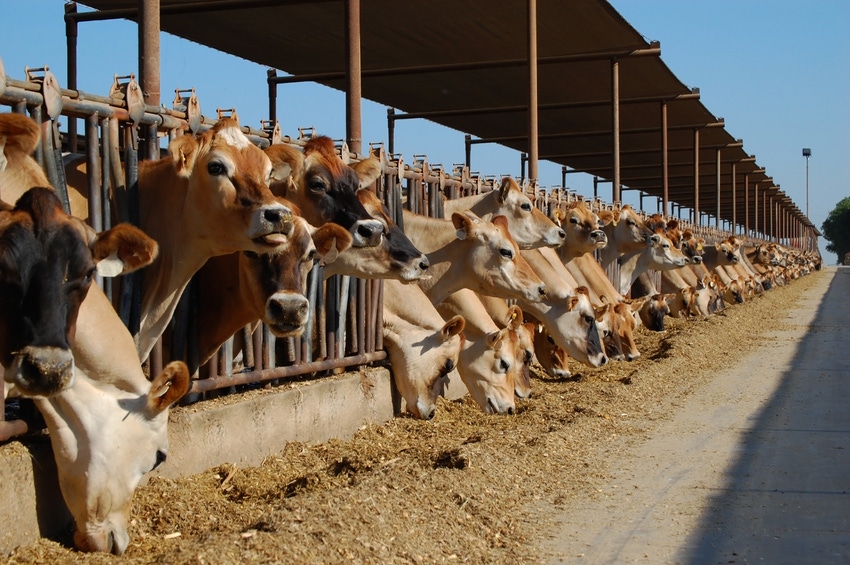
USDA announced in June its plans to provide $580 million for the Supplemental Dairy Margin Coverage program, which targets small and medium farms. In its latest announcement, USDA outlined the rules to implement the new Supplemental DMC program, which was established by the Consolidated Appropriations Act of 2021. In doing so, USDA also announced the start of the signup period for the DMC program as well as beneficial changes to the DMC feed cost formula.
This signup period – which runs from Dec. 13, 2021 to Feb. 18, 2022 – enables producers to get coverage through this important safety-net program for another year as well as get additional assistance through the new Supplemental DMC.
The Supplemental DMC program will make additional payments to small and medium-sized dairy farms whose DMC production history is below five million pounds, but whose actual production has modestly increased since 2014. Eligible farmers will be paid on 75% of the difference between their 2019 actual milk production and their DMC production history. Producers must be enrolled in the DMC program to receive Supplemental DMC payments for a given year.
“Dairy Margin Coverage is a critical safety-net for producers, and catastrophic coverage is free. These DMC updates build on other efforts of the Biden-Harris Administration to improve DMC and other key USDA dairy programs,” says Under Secretary for Farm Production and Conservation Robert Bonnie. “We encourage dairy producers to make use of the support provided by enrolling in supplemental coverage and enroll in DMC for the 2022 program year.”
Supplemental DMC coverage is applicable to calendar years 2021, 2022 and 2023. Participating dairy operations with supplemental production may receive retroactive supplemental payments for 2021 in addition to payments based on their established production history.
“The supplemental program has been long-anticipated and we are grateful not only to Secretary Vilsack and the staff at USDA, but also to the members of Congress who championed this effort and brought it to fruition,” says Steve Etka, spokesperson for the Midwest Dairy Coalition. “Expansion of this safety net program will ensure it can bring much-needed help to dairy farm families.”
Updates to the DMC program have long been supported by the Coalition, which worked to gain support of key members of Congress and worked closely with USDA in moving the measure forward.
Rep. Angie Craig, D-Minn., was part of the group of congressional members pushing for help. “We are encouraged by the Biden administration’s announcement, which heeds our call to extend financial relief to the small and medium-sized dairy producers who are in greatest need of support at this time,” Craig says.
Garrett Luthens, a Hutchinson, Minnesota dairy farmer and chairman of the Minnesota Milk Policy Committee, says dairy farmers were affected in many different ways throughout the pandemic.
“Minnesota dairy farmers are thankful for the programs that became available. But those dairy farmers with under 200 cows who added family members or partners since 2014 were left behind,” Luthens says. “We fought for and thank Congress for finally making this right through the Dairy Margin Coverage Supplemental program. Our beginning and family dairy farms should not be at a disadvantage when it comes to risk management programs.”
Signups begin December 13
After making any revisions to 2021 DMC contracts for Supplemental DMC, producers can sign up for 2022 coverage. DMC provides eligible dairy producers with risk management coverage that pays producers when the difference between the price of milk and the cost of feed falls below a certain level. So far in 2021, DMC payments have triggered for January through October for more than $1.0 billion.
“Signing up for DMC, which offers cost-effective margin protection for small and medium-sized producers as well as inexpensive catastrophic coverage for larger dairies, is a no-brainer for 2022, especially considering the improvements we fought for in Congress and advocated for at USDA,” says Jim Mulhern, president and CEO of the National Milk Producers Federation. “This year has illustrated just how valuable this program is for those producers that can take advantage of it, and DMC will once again be an essential part of many farmers’ risk management in the coming year.”
For DMC enrollment, producers must certify with FSA that the operation is commercially marketing milk, sign all required forms and pay the $100 administrative fee. The fee is waived for farmers who are considered limited resource, beginning, socially disadvantaged, or a military veteran. To determine the appropriate level of DMC coverage for a specific dairy operation, producers can use the online dairy decision tool.
Updates to feed costs
USDA is also changing the DMC feed cost formula to better reflect the actual cost dairy farmers pay for high-quality alfalfa hay. FSA will calculate payments using 100% premium alfalfa hay rather than 50%.
Etka says the Midwest Dairy Coalition supports the changes to the DMC feed cost formula which will help DMC payments to better reflect actual dairy producer expenses.
While DMC in 2022 will fully incorporate the premium-quality alfalfa price into the DMC feed cost formula, an improvement from the current structure that uses a 50-50 blend between the premium-quality price and the regular price, USDA will make retroactive payments to producers to January 2020.
About the Author(s)
You May Also Like






